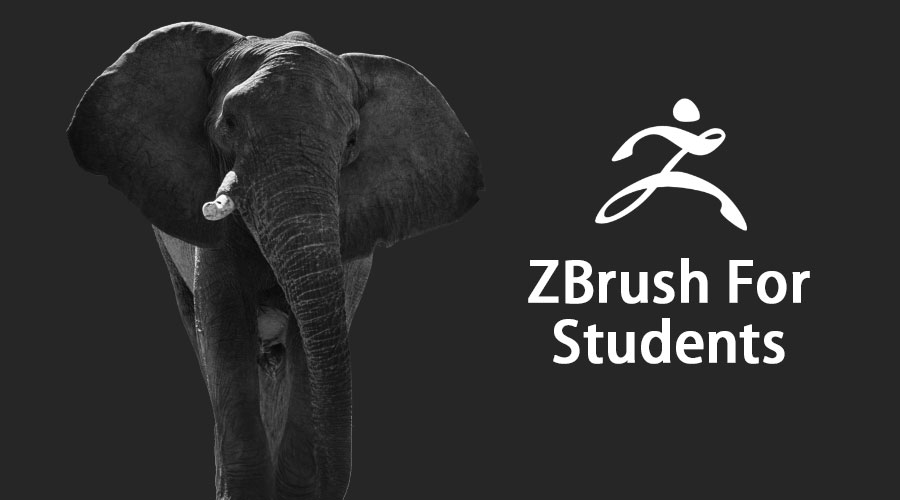Updated May 10, 2023
Introduction to ZBrush For Students
A digital sculpting program that blends 3D and 2.5D modeling, painting, and texturing in ZBrush. It was first created by PIXOLOGIC INC, founded by Ofer Alon and Jack Rimokh in 1999. It combines Autodesk, Maya, Max, Blender, Poser Pro, and DAZ Studio. ZBrush is a powerful program transforming the 3D Industry with its dynamic and intuitive interface and workflows. It is built with a fantastic interface that offers users the most advanced tools. Generally used by today’s digital artists, it has an incredible User Experience that even inspires the artist from within.
ZBrush For Skill Students
ZBrush is highly commercial yet skill-based software that can create realistic renders and 3D printing modeling. The best thing about ZBrush is that users must not worry about buying expensive graphics cards, sculpting, and painting with many polygons without using them.
The most basic features are: –
1. Base Mesh Creation
- ZModeler: It is designed to ease the creation process of the user. Users can use ZBrush to create powerful and quick new shapes. Fusing polygons and removing full blocks of geometry connecting parts with new paths with just a single click are some of the uses of this feature.
- Gizmo 3D: This feature is used for sculpture manipulations and transformation with accurate control. For a precise change, Gizmo 3D can be easily placed at any location or orientation in the interface. The user can also quickly adjust the pivot point for scale, rotation, or Move.
- DynaMesh: This feature allows the user to create models without practical limitations. This powerful feature can recreate geometry in just a few seconds by removing all stretched polygons.
- ShadowBox: It allows the user to create 3D meshes by sketching a shape.
- Live Boolean – With this attribute, the user sees real-time Boolean. That is, they get to see the live resulting mesh.
- Primitives: ZBrush can create complicated scenes that blend several smaller objects. It helps create a never-ending array of complex shapes, all from a single primitive.
2. Texturing
When a user creates or uses a texture map on a 3D model, it needs UVs. ZBrush has a Master plugin for UV that makes effective UVs for the models with a single click, which is a time-consuming task. ZBrush comes with a fantastic SpotLight Painting system that provides image editing and helps project the image to the model’s surface with the help of painting brushes.
3. Sculpting
The most essential and used feature of ZBrush is Sculpting. ZBrush feature comprises several sub-tools that the students can use for various projects. These tools are 3D brushes, 3D layers, Surface Noise, Transpose, Vector Displacement Maps, Alpha 3D, Lazy Mouse 2.0, Deformations, Projection Master, Instances, MicroMesh, Fiber mesh, and HD Geometry.
4. Import & Export
ZBrush has a powerful tool known as GoZ, an easy solution for working with other programs. ZBrush has a Decimation Master that can reduce the polygon count of a model while maintaining its resolution.
How to use ZBrush for Students?
ZBrush has many attributes that help in the sculpting of models and meshes. The students can use ZBrush by using the essential tools of the software and by learning them. It is complex but still the most advanced and used software for digital sculpting. It has many different and latest tools and features that distinguish it from others. 3D brushes, GoZ, Illustration, Polypaint, ZSpheres, Shadowbox, and ZRemesher, are some of the program’s most advanced and latest tools. The students can easily create any model, mesh, or sculpture they require using these tools.
Overview Tips for The Students
- To slide the UI elements Press and hold Ctrl + Click & Drag. Users can personalize the ZBrush User Interface and fill the empty space with their own elements.
- The user can press the number “0” on the keyboard to set the full-size view and “Ctrl+0” to see the Anti-Aliased Half document.
- A very helpful tip is that in ZBrush, the user can change the attributes of the poly frame and the playgroups. This can be done by going to the “Draw” menu from the Preference Palette.
- ZBrush has an option under the transformer palette that allows the user to activate a polygon pixel-density visual presentation. Red represents the low density, while blue represents the high pixel density.
3D Industry, with its powerful features
Today, technology has made it possible to link our imagination a bit closer to reality, and it can be done through 3D modeling, printing, rendering, and more. With every update and continuous discovery, people are more attracted to the technology that allows them to create unique and advanced designs. The 3D Industry has blown up in the past several years and has become the most demanding Industry. 3D printing is one of the most powerful features of the 3D Industry. The 3D printing uses many different technologies. The most common is the Fused Deposit Modeling. Rapid prototyping and additive manufacturing both use 3D printing. The 3D Industry is a giant industry that incorporates powerful and essential features, making it an advanced industry.
Conclusion
Even though ZBrush has transformed the 3D Industry, it is also a powerful illustration package. It is based on the power of Pixol, which takes digital printing to another level. Contrary to the ordinary pixels in other 2D applications, which consist of only color and position info, ZBrush’s Pixol contains color, position, depth, lighting, and material information. Overall, it has a phenomenal interface and extraordinary workflow that attracts students and digital designers.
Recommended Articles:
This has been a guide to ZBrush For Students. Here we have discussed the basic features of ZBrush For Students, how to use ZBrush For Students, etc. You may also look at the following article to learn more –


